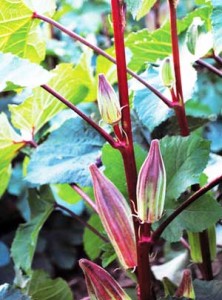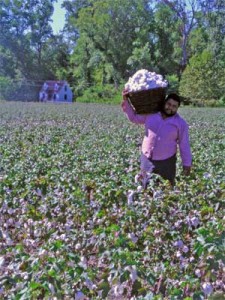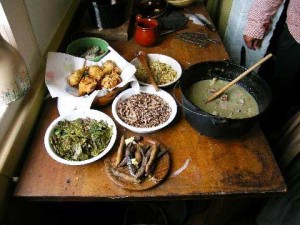by Ira Wallace
When I was growing up in north Florida in the 1950s, my grandmother was always sowing seeds, every month of the year. About once a month throughout the summer she would seed more cucumber, cantaloupe, zucchini, and summer squash, plus three different types of sweet corn. Where summers are hot, humid, and long, smart gardeners don’t sow warm-season crops just once: we keep our kitchens supplied all summer with fresh, productive plants in our gardens.
Optimizing your garden plan takes time getting to know your garden. Keep records of how long each crop takes to mature and how quickly production drops off. This won’t be the same in June as it is in August, so keep good records for each planting. The goal is to develop a garden schedule with first and last planting dates for each crop.
Gardeners in the Deep South will want to take a planting siesta: a break from planting during the hottest, driest part of the summer, from mid-July through August. Calculate back from the average first frost date to decide when to make your last sowing.
Here’s a quick guide to planning your summer successions:
Sweet Corn: Why plant 3 different varieties of sweet corn? Choosing types with different maturity times spreads out your harvest. You could plant a single corn variety once a week, or you could plant 3 different varieties (that mature a week apart) just one time. Then you only have to sow once a month, or when the last crop is 2-3 feet tall, for continuous harvests all summer. Our last planting here in central Virginia is in mid-July: 90 days before first frost is a good margin.
Snap Beans: Make a new sowing of snap beans when the plants from the previous sowing develop their second set of true leaves (or when the "sprawling" plants begin to "stand up.") We sow beans every 2-3 weeks throughout the summer, stopping 50-60 days before the average first frost. Be prepared to use row cover to protect your last crop from frosts.
Summer Squash and Zucchini: Sow new summer squash and zucchini about once a month through July, beginning 2 weeks after your average last frost. For your last sowing, leave at least at least 60 days before your average last frost. Insect pests are generally worst for these crops during the hottest months, so late sowings actually have an advantage. You can keep the plants covered with row cover until the flowers begin to open, and by the time you uncover the plants to allow for pollination, the weather will have cooled and the pests have usually let up. (We find that moschata-type Tromboncino summer squash is actually hardy enough to be productive all summer long, so we don’t need to plant successions of this variety.)
Cantaloupe and Muskmelon: We find that doing 2 plantings, an early planting after danger of frost has past and another at least 90 days before last frost, is just right for our needs. If you really love your melons, you can stretch the season further by starting a 3rd, extra-early planting indoors, about 3 weeks before the average last frost. Grow the plants up trellises to save space in your garden.
Cucumber: We generally make 2 cucumber plantings, just as with muskmelon and cantaloupe. You can also push the season with a 3rd extra-early transplanted crop. If saving space is a concern, trellis your cucumbers.
Tomatoes: Most home gardeners don’t bother with tomato successions because indeterminate varieties will continue bearing up until frost (look for Southern-adapted heirlooms that specifically mention this characteristic). However, the plants tend to produce smaller fruits as the season goes on, and production does drop off. If you want to still have large slicers at the end of summer, try starting a couple plants later in the season, leaving at least 90 days before your average first frost. (Gardeners in the Deep South grow 2 crops, one in the spring and one in the fall.)
Cilantro: It’s easy to grow cilantro in cool weather, but in hot weather it doesn’t last, so during the summer months we plant cilantro once a month. Cilantro has trouble germinating in hot soil, but we love cilantro for salsa, so we give it extra attention: we chill the seed in our fridge or freezer for a few days, sow the seed in the evening in a shady spot, water it in with cold water, then cover the soil with burlap, cardboard, or a board for 5-7 days until the seedlings emerge. (Lift the covering promptly once seedlings emerge, otherwise grasshoppers and other bugs will start feasting on the tender sprouts!)
Some warm-season crops should only be sown once. These are either very long season vegetables or crops that stay productive even under stress. One planting of okra is usually enough to last all summer. Field corn (popcorn, flour corn, flint corn, and dent corn) should only be sown once – these longer season corns need more time to dry on the ear. Other crops that don’t benefit from additional plantings include: roselle, runner beans, winter squash and pumpkins, malabar spinach, and peanuts.




